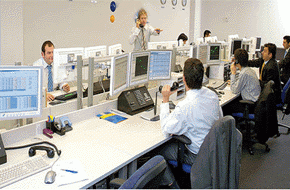
By Raiko Shareef
NZ Dollar
The NZD took its cues from a hard-hit AUD overnight. NZD/USD is 1.2% weaker at 0.7720.
It has been a rather spectacular fall from grace over the past 24 hours, after NZD benefitted from a rather strong local labour market report. NZ printed an employment gain of 0.8% q/q in Q3, taking the unemployment rate from 5.6% to 5.4%. This improvement beat the market’s expectation but was exactly as our economists had expected. NZD/USD popped higher from 0.7760 to just shy of 0.7850, where it met strong resistance.
To be fair, that positive report likely contributed to NZD’s outperformance against a collapsing AUD, in the context of a broader USD rally. NZD/AUD is up 0.7% to 0.9000 this morning.
After a brief foray below 0.7700, the NZD/USD clawed its way back above the figure, which remains a strong psychological support. Traders are now eyeing 0.7680 as the level to watch, with wariness that a clean break could lead to a very quick test of 0.7600.
Today, there are no local data to trouble the scorers. We mark 0.7680 as initial support, and 0.7750 as initial resistance.
To subscribe to our free daily Currency Rate Sheet and News email, enter your email address here.
----------------------------------------------------------
Majors
After Tuesday’s breather, the USD added to gains overnight, with a Republican victory at the US mid-terms elections seen as positive for the economy. Supported by positive jobs data, the Bloomberg Dollar Spot Index gained 0.44%, spurred by JPY and AUD weakness. The index sits roughly 3% shy of its highest ever level, struck in the depths of the financial crisis.
In the US, the Republicans upended analyst forecasts for a tight race to win control of the Senate. The Democrats lost a 53-45 majority in that chamber, where the mix will now stand 52-45 in favour of the Republicans (with one seat to be decided in a run-off). The Republicans now control both the House and the Senate. Financial markets took the result as positive for equities and the USD, as Republicans are generally seen as more business-friendly.
Data released overnight proved supportive of the USD rally, with the ADP employment report showing 230k jobs gained in October, against 220k expected. September’s outturn was also revised higher. This stood in contrast to weak euro-zone and UK prints.
Euro-zone retail sales fell by 1.3% m/m, worse than the 0.8% drop expected. August’s reading was also revised lower. In the UK, the closely-watched services PMI disappointed at +56.2 vs +58.5 expected.
The AUD was the weakest performer overnight, likely taking its cues from falling metals and iron ore prices, as well as higher FX volatility. Iron ore fell by 2.0% yesterday, after China’s authorities ordered steel mills to slow production in a (classic controlled-economy) effort to reduce haze ahead of an APEC summit in Beijing.
The London Metals Index, an input to our NAB colleagues’ fair value model of the AUD, is also down by 1.2%. AUD/USD is down by 1.8% to 0.8580, a fresh four-year low. The move was exacerbated by stops being broken at the previous 2014-low of 0.8640.
BoJ Governor Kuroda used a speech yesterday as an opportunity to flesh out the Bank’s motivation to step-up asset purchases at last week’s meeting. There was nothing the market did not already know in the speech, but some headlines from the Q&A session were eye-catching. In particular, investors should pay heed to Kuroda’s warning that there are “no limits” to the BoJ’s policy tools. JPY broke another big figure in the USD upswing overnight, with USD/JPY 1.0% higher at 114.70.
Today, investors will no doubt keep an eye on Australia’s labour market report, but we are still inclined to treat those figures with a large degree of wariness. Any outsized reaction as a result of those numbers will likely be quickly reversed. The main event tonight is the ECB’s policy announcement, where President Draghi is expected to play a fairly straight bat.
We welcome your comments below. If you are not already registered, please register to comment.
Remember we welcome robust, respectful and insightful debate. We don't welcome abusive or defamatory comments and will de-register those repeatedly making such comments. Our current comment policy is here.